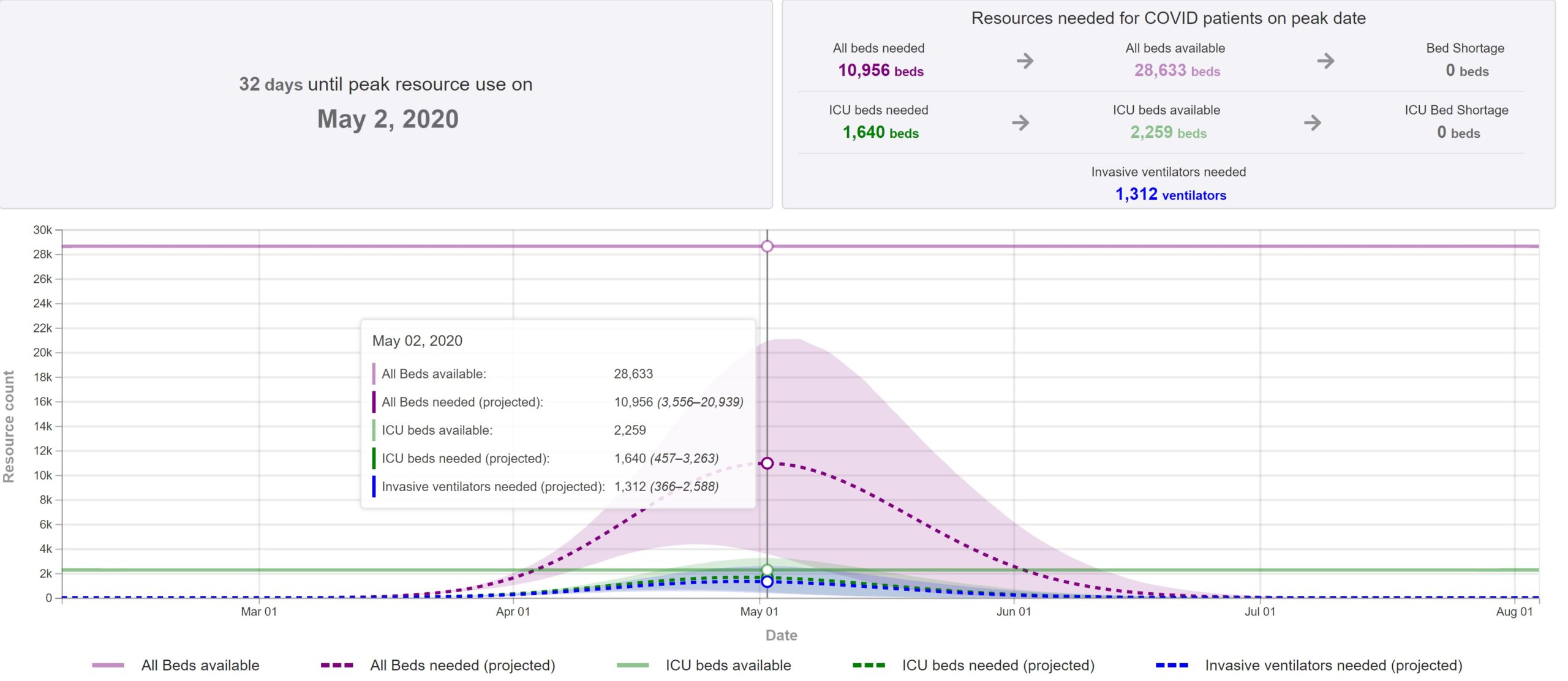From the Current:
A new study suggests San Antonio’s current shelter-in-place order, which runs through April 9, may not be long enough to ride out the worst of the coronavirus pandemic.
Texas is more than a month away from the peak of the crisis, which is likely to hit the state May 2, according to a state-by-state analysis by the Institute for Health Metrics and Evaluation.
The United States as a whole will hit its peak earlier, on April 15. But that’s still days after the Alamo City’s order expires.
May 2 will mark both the date of the virus’ peak drain on Texas’ hospital resources and the state’s highest number of COVID-19 related deaths, according to the IHME, an independent research center at the University of Washington. It made those projections by modeling statistics collected by the World Health Organization and local and national governments.
[…]
Worth noting: the IHME’s modeling assumes the public is practicing strong social distancing and other protective measures. However, it also assumes Texas Gov. Greg Abbott continues not to implement a statewide stay-at-home order and won’t mandate closure of all non-essential services.
After Texas’ potentially devastating peak, the number of deaths and hospitalizations would drop sharply by the beginning of June, according to IHME’s projections. The virus could run its course by early July.
Even so, IMHE expects 4,150 Texans to die from COVID-19 related causes by August 4. It also predicts more than 82,000 nationwide will succumb to the disease by then.
A previous projection done by UT Health scientists suggested that the Houston area could peak in mid-April, with the pandemic burning out in our area by early May. I don’t know much about epidemiology, but I do know that the assumption of when Day 0 is – that is, the day of the first infection – matters a lot, so a variance of even a couple of days could shift things quite a bit one way or the other. Beyond that, I would recommend taking these different studies and projections with the same level of skepticism and trust one would put into an individual poll result: Illuminating and useful, but still just one data point that doesn’t mean as much as it might without confirmation from other results.
With Dr. Fauci’s estimates of 100K to 200K dead nationwide in a best-case scenario, this seems optimistic to me. Maybe it’s better to think of it as a more formal (if not necessarily more precise) quantification of that best case scenario. Note that the numbers given in this projection represent the midpoint of a range of possible outcomes – those error bars are pretty damn wide. Given the uneven implementation of stay-at-home orders and the lack of a statewide order, I’d be prepared for this to end up being well on the low side. But maybe we’ll get lucky. In the meantime, stay at home. TPM has more.
(You can play with the data yourself here. That’s how I generated the embedded image in this post.)
UPDATE: This Twitter thread from Carol Bergstrom, who is an actual expert, explains the concerns with this much better than I can. His interpretation is similar to mine in that this is a “best case” model, but he posits that the “error bars” are the range of uncertainty for that best case model, not for the entire range of possible outcomes. In other words, if the underlying assumption that social distancing isn’t working as well as we hope, or that we’re not doing it well enough for it to work properly, then the range of outcomes we will get will be considerably worse.


Pingback: We don’t really know how many COVID-19 patients there are in Texas hospitals – Off the Kuff